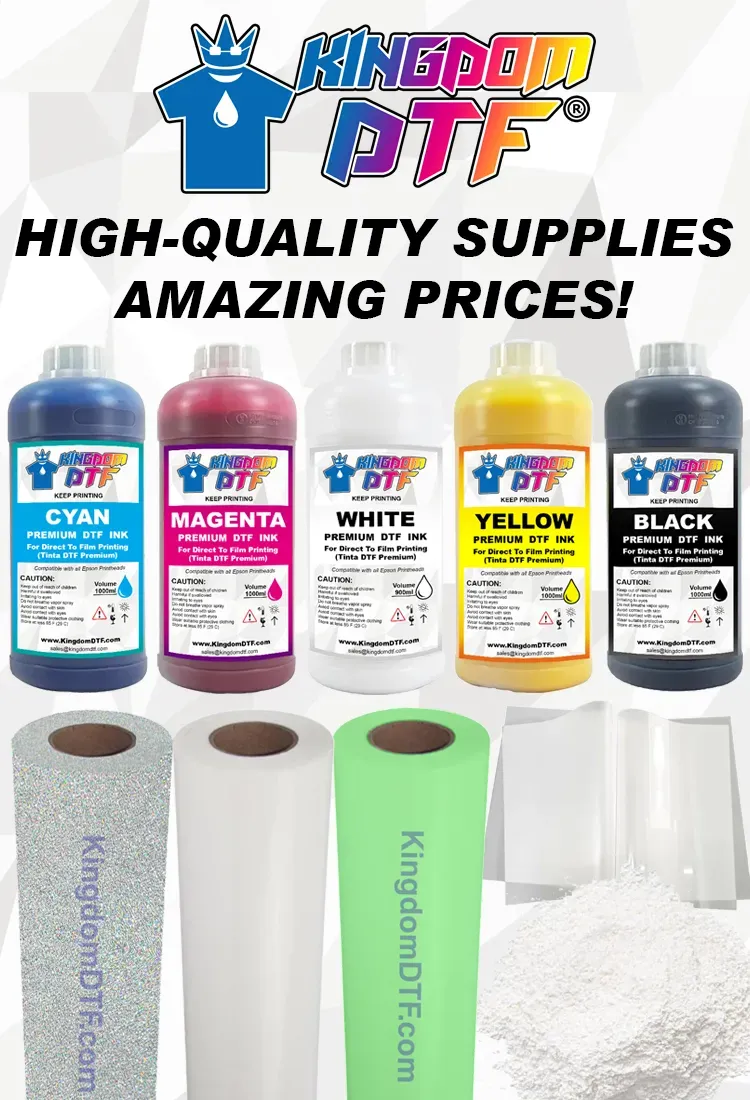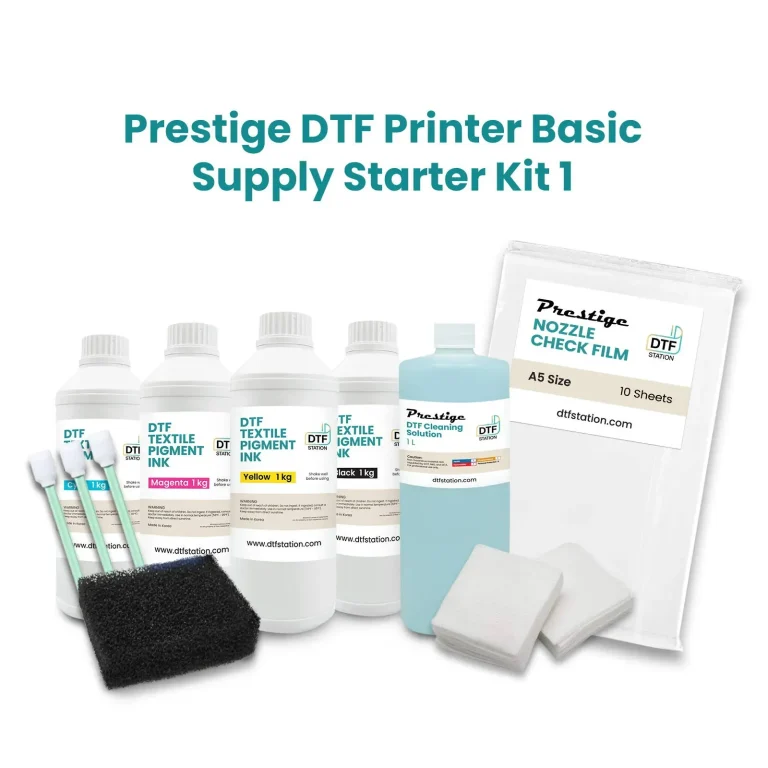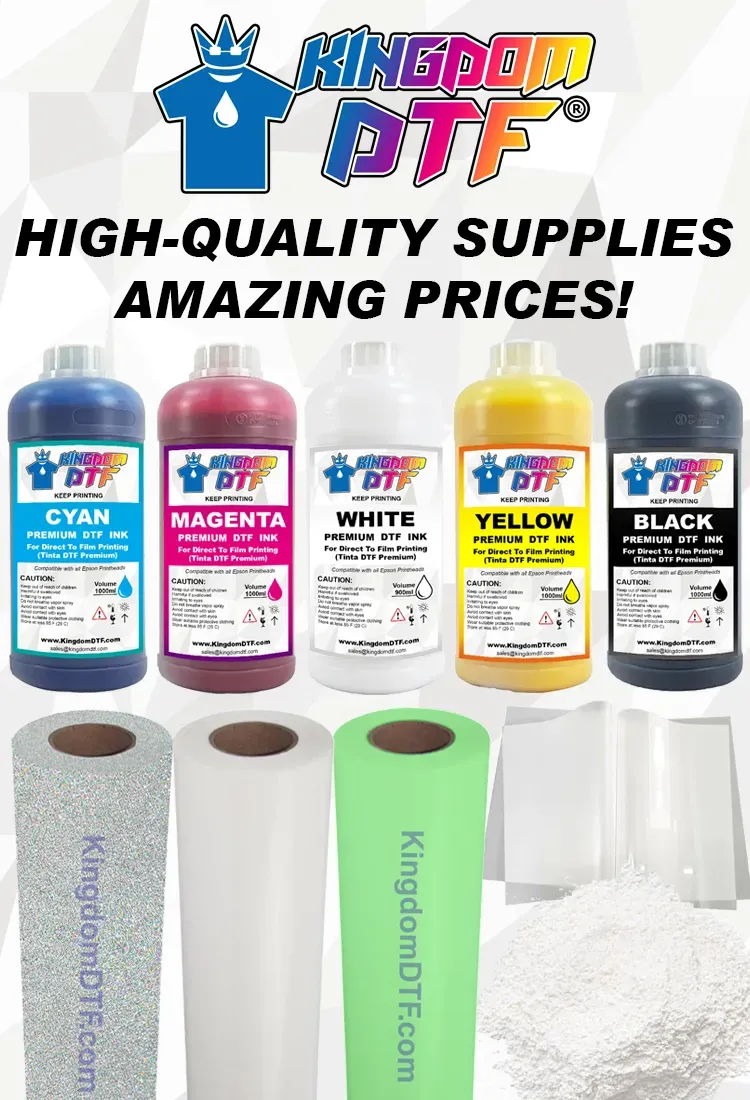
In today’s printing industry, the shift toward sustainability is not just a trend but a necessity, with Sustainable DTF Supplies taking center stage. As eco-conscious consumers increasingly demand greener alternatives, the use of eco-friendly printing materials is becoming crucial for printers aiming to reduce their environmental footprint. These supplies encompass biodegradable films and water-based inks, which are setting new standards for responsible printing practices. By integrating energy-efficient printing techniques and waste reduction strategies, businesses can achieve high-quality results while minimizing their impact on the planet. This blog post will explore the various sustainable options available, empowering printers to embrace these innovative materials and practices.
When discussing eco-friendly alternatives in the printing arena, one must consider Sustainable DTF Supplies, a term that encompasses a range of environmentally responsible materials and technologies. This approach includes the use of biodegradable films and non-toxic water-based inks, all of which contribute to waste reduction in printing processes. Moreover, the sector is witnessing the rise of energy-efficient printing solutions aimed at lowering consumption and emissions. As demand for greener printing options continues to grow, understanding these innovative supplies is vital for any printing business looking to stay relevant in an eco-conscious market. Thus, exploring sustainable alternatives is not just beneficial but essential for the modern printer.
The Rise of Sustainable DTF Supplies
The demand for sustainable DTF supplies has surged as awareness of environmental issues continues to grow. In the printing industry, this shift is driven by both consumer preferences and regulatory pressures that encourage businesses to adopt practices that minimize ecological impact. Sustainable DTF supplies encompass a range of products, including biodegradable films that decompose more readily than traditional plastics, and water-based inks that reduce harmful emissions during printing. This evolution not only caters to eco-conscious customers but also represents a significant step towards reducing the overall carbon footprint of the printing sector.
Sustainable DTF supplies symbolize a broader movement towards eco-friendly printing materials that prioritize environmental health. As printers increasingly adopt these alternatives, they contribute to waste reduction in printing processes by utilizing materials designed to minimize landfill impact. In doing so, they not only meet consumer demands but also position themselves favorably in a competitive market that favors sustainability. The rise of these products is expected to continue as more advancements in materials and printing practices emerge.
Exploring Eco-Friendly Printing Materials
Eco-friendly printing materials play a pivotal role in sustainable DTF printing, offering alternatives that significantly lessen environmental harm. Biodegradable films, which break down more easily than conventional materials, are at the forefront of this shift. These films, when paired with water-based inks, allow for a printing process that mitigates toxic emissions and reduces overall waste, leading to a healthier ecosystem. By embracing such materials, printers can create vibrant, high-quality prints while minimizing their ecological footprint.
In addition to biodegradable films, many eco-friendly printing suppliers are now sourcing materials through sustainable methods, ensuring that the production process itself adheres to low-impact practices. This includes the use of renewable resources or recycled content, which further aligns with the goals of waste reduction in printing. The adoption of these eco-friendly materials signifies a commitment to responsible printing practices, appealing to a growing demographic of environmentally conscious consumers who prioritize sustainability in their purchasing decisions.
The Benefits of Water-Based Inks
Water-based inks are revolutionizing the DTF printing landscape by providing an eco-friendly ink alternative that significantly reduces the release of volatile organic compounds (VOCs) into the environment. Unlike traditional solvent-based inks, which can be harmful to both health and surroundings during the printing and drying processes, water-based inks offer a safer option not only for printers but also for end-users. These inks are easier to clean up and dispose of, making them a practical choice for shops aiming for sustainable operations.
Furthermore, water-based inks are compatible with a wide variety of substrates, enhancing their versatility in printing various products. Printers adopting water-based technologies can significantly contribute to waste reduction in printing by reducing the overall need for harsh solvents and chemicals in their production processes. This shift not only helps improve air quality but also aligns the production process with broader sustainability goals, reinforcing the printer’s commitment to eco-friendly practices.
Energy-Efficient Printing Technology
The advent of energy-efficient printing technology marks a significant turning point in the DTF printing industry. By investing in printers designed to consume less electricity, businesses can considerably reduce their carbon footprints while simultaneously lowering operational costs. These printers are often equipped with features such as automatic power-saving settings, ensuring energy is only used when necessary and minimizing waste from idle machinery.
Adopting energy-efficient practices does not only align with eco-friendly goals but also positions printing companies as forward-thinking leaders in sustainability. As energy consumption accounts for a significant portion of the printing industry’s carbon emissions, implementing such technologies represents a vital pathway towards achieving sustainability targets. This technology serves as an essential component for businesses looking to enhance their reputation among environmentally conscious consumers and promote a sustainable future in printing.
Implementing Waste Reduction Techniques
In the quest for sustainability, effective waste reduction techniques are crucial for the DTF printing industry. Strategies like optimizing film layout design during production can dramatically decrease waste output by ensuring that every inch of material is utilized efficiently. Additionally, implementing closed-loop systems—where leftover materials are repurposed or recycled—helps maintain a circular economy within the printing process, reducing landfill dependency.
By prioritizing waste reduction, printers not only contribute to a healthier environment but also experience cost savings associated with reduced material waste. This dual benefit strengthens the appeal of sustainable DTF supplies for printers who are environmentally conscious while also needing to consider their bottom line. Emphasizing waste reduction techniques not only attracts eco-friendly consumers but also boosts the overall efficiency and sustainability of printing operations.
Consumer Demand for Sustainable Practices
The rising consumer awareness surrounding sustainability is reshaping market dynamics in the printing industry. Today’s eco-conscious customers are actively seeking brands that reflect their values, prioritizing those that showcase their commitment to using sustainable DTF supplies. As a result, printers embracing eco-friendly practices and materials are not just fulfilling a market demand; they are also enhancing their brand loyalty and customer satisfaction.
By communicating their sustainability initiatives effectively, businesses can leverage consumer interest in eco-friendly products to differentiate themselves from the competition. Whether it involves using biodegradable films or water-based inks, proactivity in promoting green practices allows printers to attract a dedicated customer base that appreciates environmentally responsible decisions. This shift in purchasing behavior represents a monumental opportunity for printers to align their operations with the burgeoning demand for sustainability.
Frequently Asked Questions
What are Sustainable DTF Supplies and why are they important?
Sustainable DTF supplies encompass eco-friendly printing materials such as biodegradable films and water-based inks used in Direct to Film printing. They are crucial because they help reduce environmental impact, supporting the growing consumer demand for green options in the printing industry.
How do biodegradable films contribute to sustainability in DTF printing?
Biodegradable films are a key component of sustainable DTF supplies as they break down naturally over time, unlike traditional plastic films that contribute to landfill waste. This reduces the overall environmental footprint associated with printing.
What advantages do water-based inks offer compared to traditional inks in DTF printing?
Water-based inks are part of sustainable DTF supplies because they significantly lower hazardous emissions and are safer for the environment than solvent-based inks. They are also easier to clean and dispose of, making them an eco-friendlier choice in the printing process.
How can energy-efficient printing practices support sustainable DTF printing?
Energy-efficient printing practices, such as using printers designed for lower electricity consumption, are vital for sustainable DTF printing. They help reduce carbon footprints, minimize energy costs, and contribute to overall waste reduction in printing operations.
What waste reduction techniques can be implemented in DTF printing?
Waste reduction techniques in DTF printing include optimizing film layout for maximum material usage and employing closed-loop systems that recycle leftover materials. These practices help minimize waste outputs and promote a more sustainable printing process.
How can certifications enhance the credibility of Sustainable DTF Supplies?
Certifications for DTF products indicate compliance with environmental standards on resource management and emission reduction. Utilizing certified sustainable DTF supplies allows businesses to effectively market their eco-friendliness, appealing to a growing base of environmentally conscious consumers.
| Key Aspect | Description |
|---|---|
| Introduction to Sustainable DTF Supplies | Exploration of eco-friendly options in DTF printing to reduce environmental impact while maintaining quality. |
| Understanding DTF Printing | Modern process that prints designs onto film to be heat-pressed onto fabric, offering sustainable alternatives compared to traditional methods. |
| Eco-Friendly Materials | Includes biodegradable and recyclable films as alternatives to plastic, and water-based inks to lower emissions. |
| Energy-Efficient Practices | Using printers designed for lower electricity consumption to minimize carbon footprints, equipped with energy-saving features. |
| Waste Reduction Techniques | Optimize material usage and implement closed-loop systems to recycle excess materials and reduce waste. |
| Consumer Demand for Sustainability | Increasing consumer preference for brands that adopt sustainable practices, providing a competitive edge in the market. |
| Certifications and Standards | DTF products often certified for environmental compliance, enhancing brands’ reputations and commitment to sustainability. |
Summary
Sustainable DTF supplies are revolutionizing the printing industry by providing eco-friendly alternatives that meet the growing consumer demand for environmentally responsible products. As the printing sector adapts to the challenges of resource management and emission reductions, the incorporation of sustainable DTF supplies becomes essential. These options, ranging from biodegradable materials to energy-efficient practices, not only help businesses reduce their environmental footprint but also align with the values of today’s conscientious consumers. By prioritizing sustainability, printers can enhance their market appeal while contributing positively to the planet’s health. Choosing sustainable DTF supplies is not just a trend; it is a vital step towards a responsible and innovative future in the printing industry.






